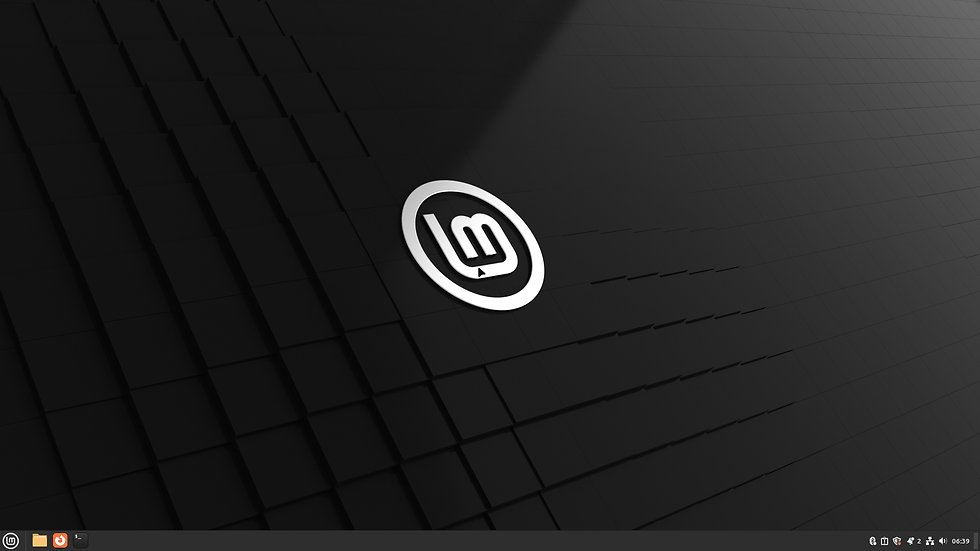Top 5 Linux Distros for All Users.
- Harry Placide
- Jun 18
- 4 min read
Updated: Aug 8
Linux is celebrated for its flexibility and openness, making it a fantastic choice for users at any skill level. Whether you are a seasoned expert or just starting your journey into the tech world, there’s a Linux distribution tailored just for you. In this article, we will dive into the top five Linux distros that meet the varied needs of every user.
Discovering the Best Linux Distributions
1. Ubuntu

Ubuntu often leads the conversation when it comes to Linux distros. Since its launch in 2004, it has risen to prominence due to its user-friendly interface and vast community support.
Built on Debian, Ubuntu follows a regular release cycle. This guarantees users access to the latest features and essential security updates. Its interface, known as GNOME, is sleek and simple, making it accessible for newcomers. In fact, a recent survey revealed that 27% of desktop Linux users prefer Ubuntu over other distros.
Furthermore, the extensive documentation and active community forums offer valuable assistance for troubleshooting. Software installation is facilitated through the Ubuntu Software Center. Here, users can easily discover and install thousands of applications, making their experience smooth and efficient.
2. Linux Mint

For those seeking a more traditional desktop experience, Linux Mint shines as an excellent choice. Also based on Ubuntu, it mirrors its advantages while delivering a familiar layout ideal for users transitioning from Windows.
Linux Mint provides several desktop environments, such as Cinnamon, MATE, and XFCE. This allows users to select the look and feel that suits them best. The Cinnamon desktop is notably popular for its modern design, encouraging customization for users who enjoy personalizing their workspace.
One of Mint's notable strengths is its multimedia support. Out of the box, users can play various media formats without needing additional codecs. This leads to a seamless experience. According to a 2023 study, 80% of new Linux users felt more at home with Linux Mint compared to other distros.
3. Fedora

Fedora distinguishes itself as a cutting-edge Linux distribution that emphasizes the integration of the latest technologies. Sponsored by Red Hat, it acts as a testing ground for new software and innovations within the Linux community.
With the default GNOME desktop environment, Fedora provides a modern and dynamic user experience. Additionally, it champions free and open-source software, appealing to users who prioritize software freedom.
For developers, Fedora offers multiple spins featuring different desktop environments and pre-installed programming tools. This versatility makes it an excellent environment for testing applications and developing projects. With an active user base, the Fedora community is an invaluable resource, ensuring users stay updated with the latest trends and tools.
4. Debian

Debian ranks among the oldest and most influential Linux distributions. It is renowned for its stability and dependability. It serves as the backbone for many popular distros, including Ubuntu.
Users who value robustness and long-term support will find Debian to be an exceptional choice. It is particularly favored by server administrators and users looking for a stable platform without frequent updates. Statistics show that nearly 95% of Debian users appreciate its reliability, even if it lacks the flashiness of other distros.
While Debian might not showcase the most cutting-edge software compared to its counterparts, its dedication to community-driven development ensures that it remains a strong and secure option. This is especially true for those who prioritize reliability.
5. Manjaro

For individuals wanting the power of Arch Linux without the steep learning curve, Manjaro is a compelling alternative. Based on Arch Linux, it provides a more approachable experience while still enabling access to the extensive Arch repositories.
The rolling release model ensures users get continuous updates and the latest software versions. Manjaro also offers various user-friendly desktop environments like XFCE, KDE, and GNOME, which cater to a wide range of preferences.
What truly sets Manjaro apart is its straightforward installation process and powerful graphical user management tools. These features make it an attractive option for those who might be intimidated by Arch's reputation for complexity. Recent reports indicate that 62% of new users found Manjaro easier to install than other popular distributions.
Final Thoughts
Selecting the right Linux distribution hinges on individual needs and experience levels. Ubuntu serves as a great entry point for beginners, while Linux Mint simplifies the transition from Windows. Fedora introduces users to the latest advancements in the Linux ecosystem, while Debian caters to those prioritizing stability. Lastly, Manjaro provides a bridge to the Arch world in a more user-friendly way.
Each of these distributions embodies the core values of Linux: community, flexibility, and freedom. Exploring any of these top five Linux distros ensures a meaningful and enjoyable experience tailored to your skills. Enjoy your journey into the Linux world!
Additional Resources
If you're looking for more information on Linux distributions, consider checking out the official websites of each distro. They offer comprehensive guides and community support to help you get started.
By diving deeper into these resources, you can enhance your understanding and make the most of your Linux experience.







Comments